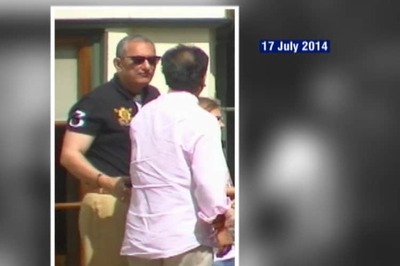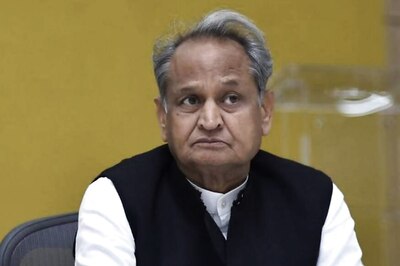
views
China has shown the ability to sustain a certain narrative even as it acts contrary to it. It is unfazed by evident contradictions as, internally, no one will openly expose such inconsistencies because of tight control over opinion. Their academics will, in fact, parrot the official arguments justifying the rationale of China’s positions. China’s inconsistencies are seen as consistent responses to changing conduct or policies of other countries. They, themselves, supposedly, never deviate from their policies; they respond to deviations by others in defence.
We see this starkly in relation to India. China readily signs agreements and equally readily violates them in letter and spirit in the course of time. It agreed in 1996 to define the LAC to avoid recurrent incidents of perceived violations by either side. In 2003 they walked out of the process when I was Foreign Secretary and Wang Yi, then Vice-Minister, was my interlocutor.
In 2005, we agreed on the Political Parameters and Guiding Principles for the Settlement of the India-China Boundary Question, which the Chinese violated in laying claim to Tawang, despite the clause that the interests of “settled populations in the border areas” will be considered. The 1993 and 1996 Peace and Tranquility Agreements and the 2013 Border Defence Cooperation Agreement were blatantly violated by their aggression in Ladakh in 2020. The mechanism of Special Representatives set up in 2003 to settle the boundary question on a political basis has become effectively defunct, though it continues to exist formally.
The latest in China’s false narrative building is the Chinese readout of the meeting between NSA Ajit Doval and Foreign Minister Wang Yi at the Johannesburg BRICS NSAs meeting. It claims that President Xi Jinping and Prime Minister Narendra Modi reached an important consensus at the G20 meeting in Bali last year on stabilising bilateral relations, enhancing strategic mutual trust, and promoting the return of bilateral relations to the track of healthy and stable development at an early date. While our spokesperson had then said that there was only an exchange of courtesies between the two leaders at Bali and nothing more, we now admit that the two leaders had some exchange during dinner on the need to stabilise our bilateral relations.
This means very little in substantive terms. India and China have diplomatic ties, their militaries are talking to each other, the Defence Ministers of the two countries have met and discussed the tensions on the border. Foreign Minister Jaishankar has met his Chinese counterpart several times. His message has been consistent, namely, that as long as the situation on the border remains abnormal, the ties between the two countries cannot be normal. The fact also is that Modi and Xi have met several times, with two informal summits, in China (Xian) and in India (Mamallapuram).
Too much should not be read into a brief exchange at Bali on “stabilising relations”. Modi’s intention would have been to encourage Xi to take steps to prevent the ties from deteriorating further in view of an increasingly unstable regional and global situation. “Stabilising relations” could mean from our side a host of things: resolving remaining friction points post Galwan, dealing with the outstanding the Depsang and Demchok issues, adhering to the provisions of the 1993, 1996 and 2013 border agreements, delineating the LAC, and so on.
For the Chinese side to talk of a “consensus” reached between the two leaders to stabilise relations is disingenuous as they have continued to take steps before and since Bali to destabilise relations and deepen the trust deficit between the two sides. No progress has made on remaining friction points post the Galwan aggression by the Chinese, the last rounds of military and diplomatic level talks have produced no forward movement, the Chinese are continuing to expand their military infrastructure in Tibet, a second bridge is being built on Pangong Tso lake, and their forces have not moved back to peacetime locations.
In December 2022, it was reported that China had built a new road just across Yangtse in the Tawang sector. In April 2023, China released a third set of 11 names in Chinese, Tibetan and pinyin characters for sites in Arunachal Pradesh, as part of efforts to re-emphasise Beijing’s claim over the Indian state. In May 2023, it was reported that China had been building border defence villages adjacent to Uttarakhand, about 11 kilometres away from the Line of Actual Control (LAC). In July 2023, China provocatively reverted to its 2005 practice when it issued stapled visas to Indian athletes from Arunachal Pradesh travelling to China to participate in the University Games, eliciting a strong protest from India which has reserved its right to suitably respond.
The Indian read-out of the Doval-Wang Yi meeting in fact repudiates the Chinese claim on any “consensus” at Bali. It specifically mentions the erosion of strategic trust and the public and political basis of the relationship and emphasises the importance of continuing efforts to fully resolve the situation and restore peace and tranquility in the border areas to remove impediments to normalcy in bilateral relations.
In this, Doval was recalling the joint statement when Xi Jinping visited India in 2014 which said that “Peace and tranquility on the India-China border areas was recognised as an important guarantor for the development and continued growth of bilateral relations”. This was repeated when Modi visited China in 2015, with both sides also agreeing that “Pending a final resolution of the boundary question, the two sides commit to implementing the existing agreements and continue to make efforts to maintain peace and tranquility in the border areas”.
China’s readout of the Doval-Wang Yi meeting also said that “that the two sides should adhere to the strategic judgement of the leaders” that “they do not pose a threat to each other, and they are each other’s development opportunities”. With 50,000 troops on each side still confronting each other in the Himalayas, with China developing more airfields in Tibet and deploying advanced missiles, and India too positioning its assets to counter the Chinese threat, any talk of the two countries not posing a threat to each other is empty rhetoric. On top of this, China’s long- standing policy of building Pakistan as a strategic threat to India, of seeking to erode our influence and interests in Nepal and Sri Lanka, and its maritime objectives in the Indian Ocean are serious threats to our security. India’s support for the Indo-Pacific concept and its Quad membership are a response to this Chinese expansionism.
The Chinese readout seems to be harking back to the past when we ceded enormous political ground to China. In April 2005, we signed the ‘Strategic and Cooperative Partnership for Peace and Prosperity’ with China. To have accepted China as a strategic partner with all the outstanding bilateral and geopolitical issues with it was a strategic misstep. In 2006, during President Hu Jintao’s visit the joint statement talks of bright prospects for common development and says that the two countries are not rivals or competitors but are partners for mutual benefit, and that there is enough space for them to grow together.
In 2013, during Chinese Prime Minister Li Keqiang’s visit to India we again declared that both “countries view each other as partners for mutual benefit and not as rivals or competitors”. Worse, we agreed that the “two sides are committed to taking a positive view of and support each other’s friendship with other countries”, endorsing implicitly China’s relations with Pakistan, Nepal, Sri Lanka and Maldives, for instance, though we may have had in mind China’s concerns about our growing ties with the US, though this was hardly a balanced bargain.
In August 2022, in response to Jaishankar’s speech on India’s vision of the Indo-Pacific at the Chulalongkorn University in Bangkok, the Chinese Foreign Ministry repeated the line about “the common understanding between our two leaders on being each other’s cooperative partners, not causing threats to each other and presenting each other with development opportunities”. Earlier in June 2019 at the SCO summit in Bishkek Xi Jinping, according to China, told Modi that India and China “do not pose threats” to each other and expressed Beijing’s willingness to join New Delhi in pushing forward a closer development partnership between the two sides.
Having obtained its immediate goals on the LAC in Ladakh, positioned itself strongly right across the long border with India with construction of new village complexes and development of an east-west road infrastructure for rapid military deployments, China wants to deflect attention away from its aggressive policies towards India by downplaying the situation it has created on the border and focusing instead on the potential of productive economic ties. It seems to believe that serious differences on the security front can be separated from economic ties, as in the case of its relations with the US and Japan, for instance. In a sense, they have achieved this on the ground with our trade with China reaching record levels at $135.98 billion in 2022.
In China, India faces unprincipled pragmatists!
Kanwal Sibal is a former Indian Foreign Secretary. He was India’s Ambassador to Turkey, Egypt, France and Russia. Views expressed in the above piece are personal and solely that of the author. They do not necessarily reflect News18’s views.




















Comments
0 comment